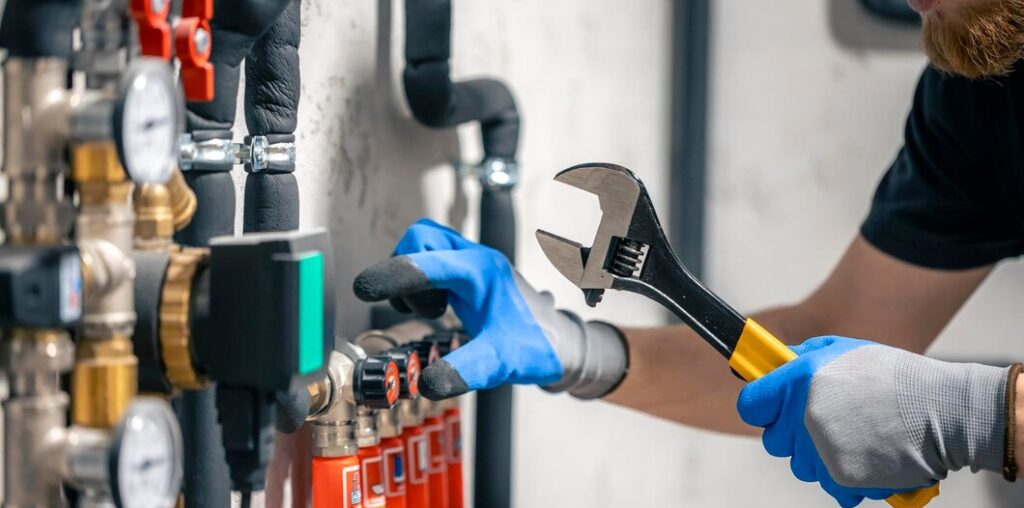A hidden water leak can cause more damage than you might expect. From skyrocketing water bills to structural damage and mould growth, undetected leaks can be a homeowner’s worst nightmare. Thankfully, modern technology has made it easier than ever to detect leaks early and accurately. Professional plumbers now use advanced methods to locate leaks without tearing up walls or floors unnecessarily. If you’re curious about how leaks are found, let’s dive into the three main types of leak detection techniques and how they work.
1. Acoustic Leak Detection
Acoustic leak detection is one of the most commonly used methods for identifying hidden water leaks. This technique relies on sound to pinpoint the location of a leak.
How It Works:
When water escapes from a pipe, it creates a distinct sound as it flows through cracks or holes. Using specialised listening devices, such as ground microphones and acoustic sensors, technicians amplify these sounds to locate the exact point of the leak. The equipment is sensitive enough to pick up subtle noises that are inaudible to the human ear.
Advantages:
Non-Invasive: Acoustic detection eliminates the need for digging or breaking walls unnecessarily, making it a minimally disruptive option.
- Efficient and Accurate: This method allows professionals to quickly detect leaks without guesswork, saving time and money.
- Versatile: It works well for detecting leaks in underground pipes, walls, or even concrete slabs.
Best For:
Acoustic leak detection is ideal for underground plumbing systems or concealed pipes where visual inspection isn’t possible. It’s particularly useful for detecting leaks in residential homes, commercial buildings, and outdoor pipelines.
Limitations:
Acoustic detection might be less effective in noisy environments or if the water pressure is too low to produce audible sounds.
2. Thermal Imaging Leak Detection
Thermal imaging is a cutting-edge technology that uses infrared cameras to detect temperature differences caused by water leaks. This method is especially effective for finding hidden leaks behind walls, under floors, or in ceilings.
How It Works:
Water escaping from a pipe often causes temperature changes in surrounding materials like drywall, wood, or concrete. Infrared cameras capture these temperature fluctuations, creating a thermal image that highlights cooler or warmer areas where moisture may be present.
Advantages:
- Non-Invasive: Like acoustic detection, thermal imaging doesn’t require any physical damage to your property during the inspection process.
- Visual Evidence: The thermal images provide clear visual documentation of potential problem areas, which can be helpful when explaining issues to homeowners or filing insurance claims.
- Covers Large Areas Quickly: Thermal imaging allows technicians to scan entire rooms or buildings efficiently, making it an excellent option for large properties.
Best For:
This method is perfect for detecting leaks in roofs, ceilings, walls, and under tiled floors where water may not be immediately visible. It’s also useful for identifying insulation issues and other heat-related problems.
Limitations:
Thermal imaging may not always detect slow leaks or small amounts of moisture. Additionally, interpreting thermal images requires expertise to avoid false positives caused by unrelated temperature changes.
3. Pressure Testing
Pressure testing is a direct and reliable method used to identify leaks by measuring the pressure within your plumbing system. It’s particularly effective for detecting even the smallest leaks that might go unnoticed with other methods.
How It Works:
During pressure testing, your plumbing system is pressurised using air or water. Technicians then monitor the system for any drops in pressure over time. A significant drop indicates that there’s a leak somewhere in the network of pipes.
Advantages:
- Highly Accurate: Pressure testing provides precise information about the integrity of your plumbing system and can identify even tiny leaks that are difficult to detect otherwise.
- Proactive Leak Detection: This method is often used during new installations or renovations to ensure there are no hidden issues before sealing up walls or floors.
- Versatile Application: Pressure testing works well for both residential and commercial plumbing systems.
Best For:
Pressure testing is commonly used during construction projects or when installing new plumbing systems. It’s also ideal for identifying hidden leaks in existing systems that aren’t causing visible damage yet but may lead to bigger problems over time.
Limitations:
This method doesn’t pinpoint the exact location of a leak—it only confirms its presence. Additional techniques like acoustic detection may be needed afterwards to locate the source precisely.
Why Professional Leak Detection Matters
While some minor leaks may be easy to spot (like dripping faucets), hidden leaks can go undetected for months or even years—causing extensive damage in the process. Professional leak detection services combine these advanced methods with expert knowledge to ensure accurate results without unnecessary disruption.Here’s why hiring professionals matters:
- They use specialised tools and equipment that aren’t available for DIY use.
- They have the training needed to interpret results accurately.
- They can recommend effective solutions tailored to your specific issue.
Understanding the three main types of leak detection—acoustic detection, thermal imaging, and pressure testing—can help you appreciate how modern technology makes it easier than ever to address plumbing issues before they escalate into costly repairs. Each method has its strengths and applications, so choosing the right one depends on your specific situation.
If you suspect a leak in your home or business, don’t wait until it causes significant damage! Reach out to nGO Plumbing, experts in comprehensive Leak Detection Services Sydney, who use these advanced techniques to find and fix leaks quickly and efficiently. Protect your property and save on future repairs by contacting their experienced team today!
Featured Image by Freepik




